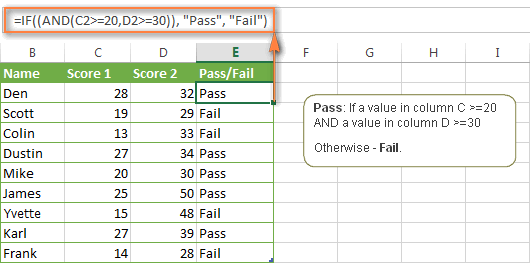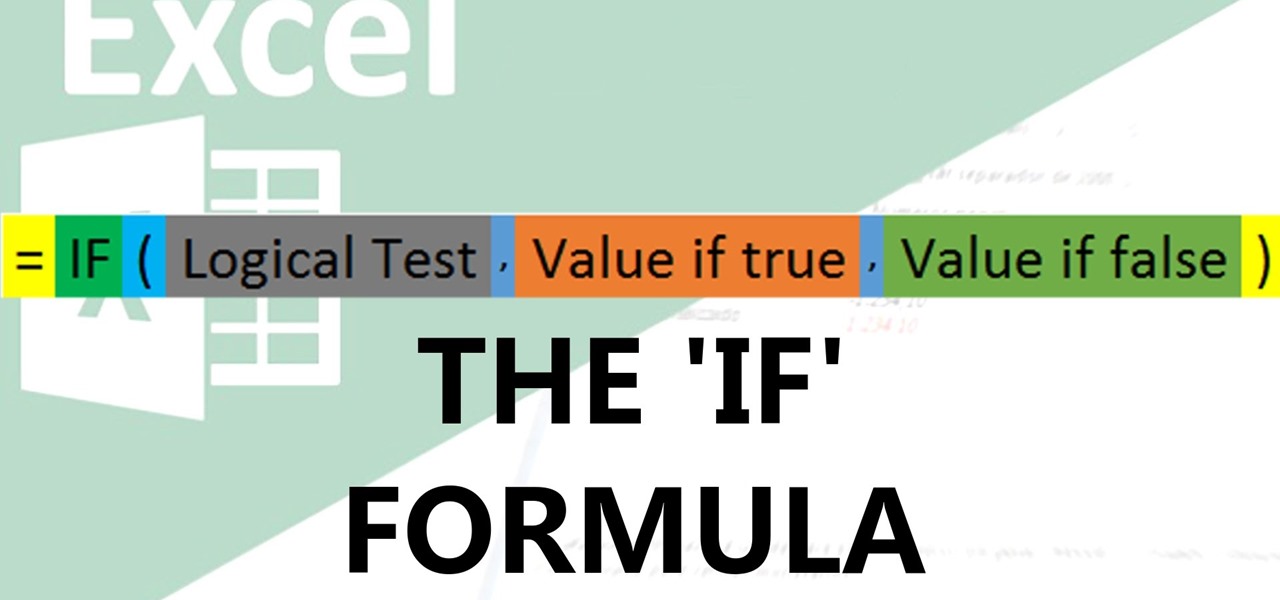All about Excel If Statements
The function tells the spreadsheet the sort of formula. If a math feature is being performed, the mathematics formula is surrounded in parentheses. Using the range of cells for a formula. As an example, A 1: A 10 is cells A 1 through A 10. Solutions are created making use of outright cell referral.

In our first formula entered into the cell "D 1," we by hand go into a =amount formula to include 1 +2 (in cells A 1 and B 2) to obtain the total of "3." With the following example, we make use of the highlight cells A 2 to D 2 and after that instead of inputting the formula use the formula switch in Excel to immediately create the formula.
Ultimately, we by hand get in a times (*) formula utilizing sum feature to find the value of 5 * 100. Note The functions listed here may not coincide in all languages of Microsoft Excel. All these examples are done in the English version of Microsoft Excel. Tip The instances below are provided in indexed order, if you wish to begin with one of the most typical formula, we suggest starting with the =SUM formula.

=STANDARD(X: X) Show the typical amount in between cells. As an example, if you intended to obtain the average for cells A 1 to A 30, you would type: =STANDARD(A 1: A 30). =COUNT(X: X) =COUNTA(X: X) Count the number of cells in a range which contain any type of message (text and numbers, not just numbers) as well as are not vacant.
The Excel If Then Formula Statements
If seven cells were vacant, the number "13" would be returned. =COUNTIF(X: X,"*") Count the cells that have a certain worth. As an example, if you have =COUNTIF(A 1: A 10,"TEST") in cell A 11, after that any kind of cell between A 1 via A 10 that has words "examination" will be counted as one.
For instance, the formula =IF(A 1="","SPACE","NOT SPACE") makes any kind of cell besides A 1 say "BLANK" if A 1 had nothing within it. If A 1 is not empty, the other cells will read "NOT SPACE". The IF statement has much more intricate usages, yet can usually be minimized to the above structure.
As an example, you may be separating the values between 2 cells. Nonetheless, if there is nothing in the cells you would certainly get the =INDIRECT("A"&"2") Returns a reference specified by a text string. In the above instance, the formula would return the worth of the cell consisted of in A 2.
=AVERAGE(A 1: A 7) Discover the mean of the worths of cells A 1 via A 7. For instance, 4 is the median for 1, 2, 3, 4, 5, 6, 7. =MIN/MAX(X: X) Min as well as Max stand for the minimum or optimum amount in the cells. For instance, if you intended to get the minimum value in between cells A 1 and A 30 you would certainly put =MINUTES(A 1: A 30) or if you desired to obtain the optimum concerning =MAX(A 1: A 30).
All About Excel If Not Blank
For example, =Item(A 1: A 30) would multiple all cells with each other, so A 1 * A 2 * A 3, and so on =RAND() Produces a random number better than zero but less than one. As an example, "0.681359187" can be an arbitrarily generated number positioned into the cell of the formula. =RANDBETWEEN(1,100) Produce an arbitrary number between 2 values.
=ROUND(X, Y) Round a number to a details variety of decimal locations. X is the Excel cell consisting of the number to be rounded. Y is the variety of decimal areas to round. Below are some examples. =ROUND(A 2,2) Beats the number in cell A 2 to one decimal area. If the number is 4.7369, the above instance would certainly round that number to 4.74.
=ROUND(A 2,0) Beats the number in cell A 2 to no decimal areas, or the nearest number. If the number is 4.736, the above example would round that number to 5. If the number is 4.367, it would round to 4. =AMOUNT(X: X) The most frequently utilized function to add, deduct, numerous, or divide values in cells.
=SUM(A 1+A 2) Include the cells A 1 and also A 2. =SUM(A 1: A 5) Add cells A 1 through A 5. =AMOUNT(A 1, A 2, A 5) Adds cells A 1, A 2, and A 5. =SUM(A 2-A 1) Subtract cell A 1 from A 2. =SUM(A 1 * A 2) Multiply cells A 1 and A 2.

10 Easy Facts About Excel If Shown
=SUMIF(X: X,"*"X: X) Carry out the AMOUNT function only if there is a defined worth in the very first chosen cells. An instance of this would certainly be =SUMIF(A 1: A 6,"TEST", B 1: B 6) which only includes the values B 1: B 6 if the word "test" was put someplace in between A 1: A 6. So if you place EXAMINATION (not instance delicate) in A 1, yet had numbers in B 1 through B 6, it would just include the worth in B 1 since TEST remains in A 1.

=TODAY() Would certainly print out the existing date in the cell gotten in. The value will alter each time you open your spreadsheet, to show the current date as well as time. If you intend to get in a date that does not alter, hold down semicolon) to enter the date. =FAD(X: X) To find the usual value of cell.
=VLOOKUP(X, X: X, X, X) The lookup, hlookup, or vlookup formula allows you to browse as well as find related values for returned outcomes. See our lookup meaning for a full interpretation and also complete details on this formula. .
Each IF function in an Excel spread sheet returns a couple of messages. The first-- the "if" message-- shows if cells satisfy standards that you specify. The second-- the "otherwise" message-- displays if they do not. As an example, intend that your sheet tracks the hours that each of your employees works.
excel if formula sumif formula if excel example excel if formula with and